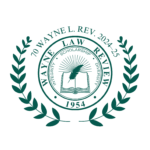Promoting Urban Agriculture as an Alternative Land Use for Vacant Properties in the City of Detroit: Benefits, Problems and Proposals for a Regulatory Framework for Successful Land Use Integration
Urban agriculture is significant to the history of the City of Detroit, from ribbon farms to Mayor Hazen Pingree’s famous potato patches of the nineteenth century, victory gardens to gardening angels of the twentieth century, and a burgeoning of garden network capacity to gardening programs in the twenty-first century. To scale up the benefits of existing urban agriculture operations, especially as it confronts large expanses of vacant land, Detroit should actively promote urban agriculture on a widespread scale. The enormity of Detroit’s vacant land is overwhelming even to urban experts, and there is little to no market demand for new residential, commercial or industrial developments. The few recent developments have been small, scattered and required major public subsidies. Urban agriculture, on the other hand, does not rely upon subsidies and serves a local demand for wholesome, inexpensive food, while providing residents with jobs, a method for eliminating neighborhood blight and a greater feeling of self- worth. Read More …
